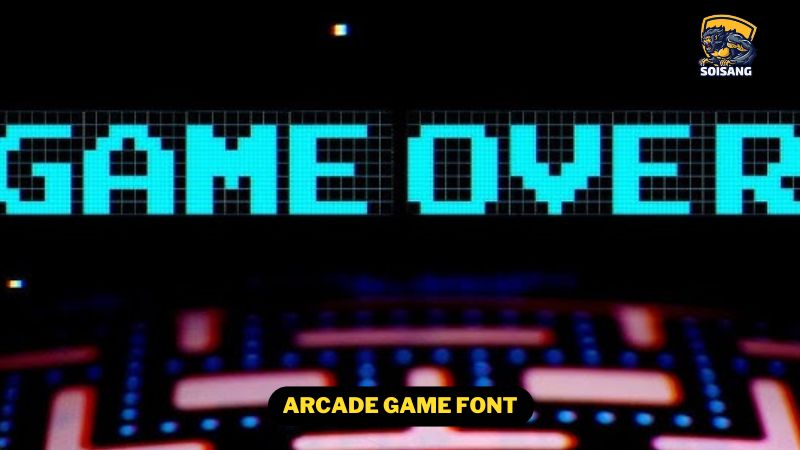Fidget Trading Card Toy
Published on October 10, 2024

The arcade game font is more than just a style of lettering; it’s a visual representation of a golden era in gaming history. From the bright, pixelated titles of the 1980s to the futuristic styles of modern arcade machines, arcade fonts are a blend of nostalgia, creativity, and design innovation. These fonts evoke the excitement of neon-lit arcades, coin-operated machines, and high-score chases.
In this article, we’ll explore the history, characteristics, types, and modern uses of arcade game fonts, as well as tips for choosing the best arcade font for your project.
An arcade game font refers to the typography style commonly used in arcade games, particularly during the golden age of arcades (1970s–1990s). These fonts are characterized by their pixelated or blocky appearance, often designed to be highly readable on low-resolution screens.

In the 1970s, arcade games like Pong featured minimalistic, monochrome text due to hardware limitations. Fonts during this era were utilitarian, focusing solely on readability.
As technology advanced, arcade games like Pac-Man and Space Invaders began incorporating more decorative and colorful fonts. Titles were bold and designed to attract players in bustling arcades.
By the 1990s, vector-based graphics allowed for smoother typography. Games like Street Fighter II and Mortal Kombat showcased sharp, dramatic fonts that matched their intense gameplay.
The rise of indie games and retro aesthetics in the 2000s brought arcade fonts back into the spotlight. Many modern designs mimic the pixelated and neon-heavy styles of classic arcade games.
Arcade fonts evoke a sense of nostalgia for the golden age of gaming, appealing to both older gamers and modern audiences who appreciate retro aesthetics.
The clean, bold lines of arcade fonts remain visually striking and versatile, even in contemporary design contexts.
From gaming to branding, arcade fonts are used in various mediums to convey fun, energy, and a touch of vintage flair.
Indie developers often incorporate arcade fonts into their games to create a retro vibe or pay homage to classic titles.
Arcade fonts are frequently used in advertisements, posters, and merchandise to attract attention and evoke excitement.
T-shirts, mugs, and other merchandise often feature arcade-style typography for a nostalgic and trendy look.
Modern software and apps use arcade fonts for playful or retro-themed interfaces.
For those seeking a unique touch, creating your arcade font can be a rewarding experience:
Beyond gaming, arcade fonts have permeated movies, music, and other forms of entertainment. Films like Ready Player One and music albums with retro themes frequently incorporate arcade-style typography to enhance their aesthetic appeal.
The arcade game font is a timeless element of design that bridges the gap between the past and the present. Whether you’re designing a retro-inspired game, creating a nostalgic marketing campaign, or simply exploring the history of typography, arcade fonts offer a perfect blend of style, functionality, and nostalgia.
From pixel-perfect classics to neon-lit masterpieces, the world of arcade fonts continues to inspire and captivate, just as those old arcade cabinets once did. Explore, create, and celebrate the enduring charm of arcade typography!